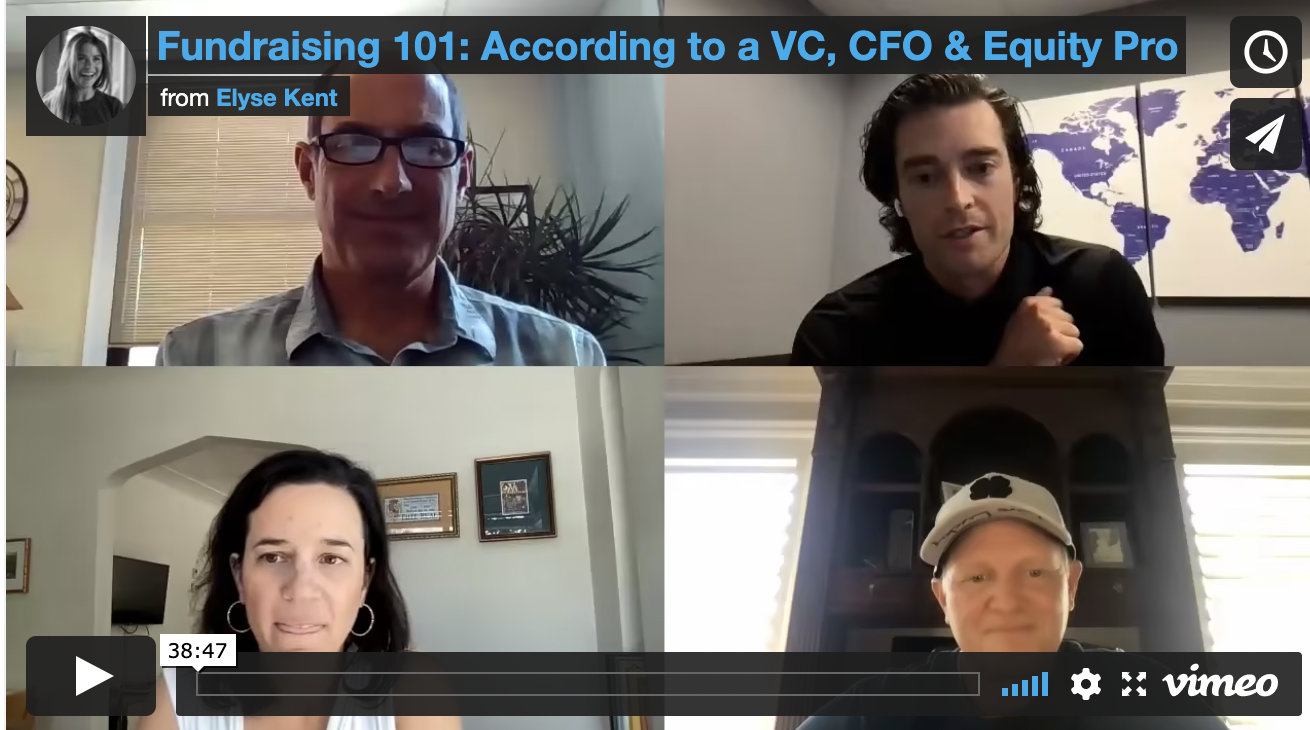Are you a founder raising capital for your startup? Trying to get an understanding on the different ways to structure your round and the difference between a SAFE and a priced round? Looking to gain more of an understanding about what investors look for? Here’s a quick run recap of our breakdown on what you should know when raising money.
As a first time founder, here is what you should know about raising capital for your startup.
1. Is your company backable? What are some differentiators between a VC investible company versus more of a lifestyle oriented company?
Determine your Total Addressable Market (TAM): Look at your market size. A really easy metric is to ask yourself, in 5-10 years, could you get to 100 million dollars in revenue?
2. What are the differences between SAFEs, convertible debt and venture funding?
Venture capital: An equity round is a priced round and is going to require you to put a value on the company, which becomes difficult at an early stage.
SAFE: Founders, you’re basically selling a promise to investors that says they have a chance to buy some stock later at a discount. You’re not selling equity so you don’t have to value the company, which makes it easier to raise and legally structure. It’s less expensive to do. Then the valuation can happen at the next round.
You can set a valuation cap on SAFEs & convertible funding.
SAFE is a founder friendly vehicle that has become more acceptable. You can get it online and do it for free (see YC’s SAFE note financing templates).
Convertible funding: It becomes actual debt. Convertible debt you will have to pay interest on eventually.
With SAFEs & convertible debt you don’t want to raise too much because it will add to the dilution. You don’t want to raise a $3M or $4 million convertible debt. it does take more time to close a priced (venture capital/ equity) round than it does to do a convertible debt or a safe.
Be prepared for the fact you’re giving a discount when you are raising a SAFE.
i.e. You’re providing a 20% discount because their money is there today. Later, when there is a priced round, that person who came in today will get 20% off that price. So that adds to your dilution – thus you want to limit how much you raise.
3. How much you think you want to raise versus how much you probably should raise.…
Use the 2x or 3x rule: Multiply your total raise by 2x or 3x – that would be the value of the company.
Ask yourself: Do you have enough traction to justify what the value would be for the amount you have determined to raise?
i.e. If you raise 3M, your valuation would be 6-9M.
Do you really have enough information on your market? Is your revenue built big enough to really justify that to an investor?
For the full recap and breakdown with additional details (should I go through an accelerator program? how do i determine if an investor is right for me?), listen to the panel below.
Here’s a recording for all those who missed our Fundraising 101: According to a VC, CFO & Equity Pro webinar with Carta, AVL Growth Partners & Bee Partners.



